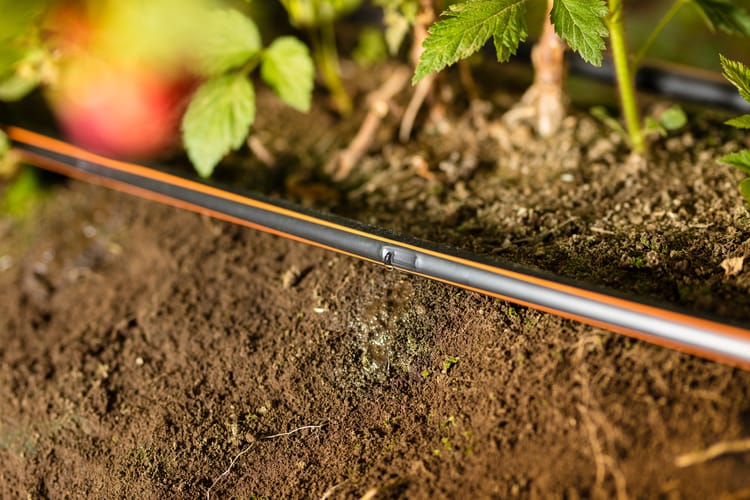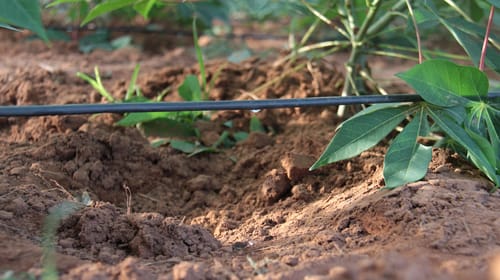What is drip irrigation?
Drip irrigation is widely recognized as the most efficient way to deliver water and nutrients to growing crops. It can help reduce water use and runoff dramatically, which is beneficial for farmers and the planet while also substantially increasing crop yields and quality. In fact, this irrigation has been shown to increase water efficiency by 70% and even cut energy costs in half.
Drip systems apply water and nutrients directly to a plant’s root zone frequently but in small doses to ensure optimal growing conditions that produce high-quality yields. This is achieved using systems of pipes called “driplines” that have small units that we like to refer to as “drippers,” which emit drops containing water and nutrients.
These driplines are usually installed on the surface or subsurface. A surface irrigation system is usually temporary and must be replaced on a yearly basis. They rely on close emitter spacing of between 12 and 18 inches, and the dripline itself is 1 to 6 inches below the surface. A subsurface irrigation system is permanent and has 20 to 27-inch emitter spacing and a dripline 8 to 14 inches below the surface.
By delivering water and nutrients directly to the plant’s root zone, this irrigation significantly reduces water runoff, evaporation loss, and drift, which are three of the most common inefficiencies of other irrigation systems.
In addition to farming and agriculture, this kind of irrigation also has uses in landscaping and turf, greenhouses and nurseries, wastewater, mining, and recycling. As the leader in drip systems and technology for over 40 years, Netafim has worked with a wide variety of industries to create applications specific to their operations. This is why our customers trust us to create a tailor-made system that supports the continuous growth of their crops and businesses.





